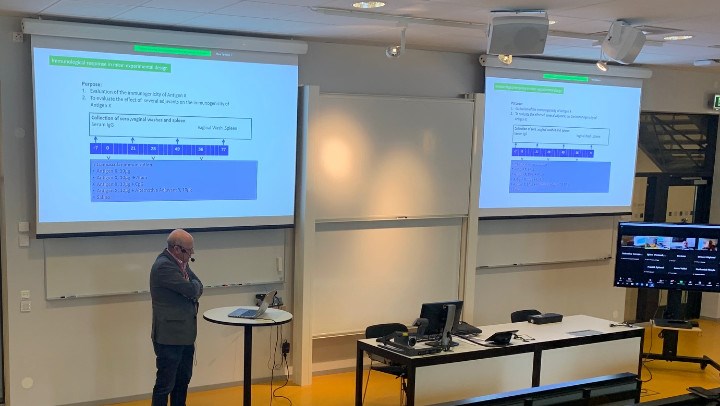Annual workshop, June 16th, 2022

The annual work-shop meeting was held in a hybrid format with participants both online and in person at Örebro University. Researchers from the university presented updates on progress and future plans for the subprojects and the work packages.
1. The Chlamydia vaccine candidate showed promising results in the first animal experiment with detectable humoral immune response in both serum and mucosal samples. The establishment of a challenge model to test these vaccine candidates is underway.
2. The first constructs to develop tolerogens for production in plants were created. These constructs may target different compartments in plants (ER, cholorplast etc.), which can be visualized after transient expression.
3. A joint project that recently got funding from the Knowledge foundation was presented. Plants established as production systems for vaccines will be utilized in this work to produce hemoglobin, which could be used to treat iron deficiency anaemia.
4. An associated plant-based study about the production of tick-borne encephalitis virus (TBEV) virus-like particles (VLP) was demonstrated. VLPs carrying the TBEV gene of interest has been successfully expressed in tobacco plants but did not induce significant immune response in tested animals. VLP quantification and quality control in leaves, stable transformation of plants and the use of adjuvants may lead to the development of an efficient plant based TBEV vaccine.
5. Several probiotic bacterial strains were transformed to express human immunodeficiency virus (HIV) antigens. After quantification of the produced protein, these bacteria will be used to immunize mice, experiments that we started to plan in detail.
6. We listened to interesting aspects of HIV vaccine trials in Tanzania and Mozambique presented by Karolinska Institutet. Their experience in developing and testing promising vaccine candidates that could be evaluated in human trials is a great asset for the projects.
7. The first animal experiment in the TBE vaccine development work package was conducted using Langat virus. The aim is to determine the baseline for further experiments by assessing the viraemia peak in mice and optimizing the future evaluation methods.
8. Infectious clones of Langat virus were developed by using two different strategies. After confirming their genetic properties by next-generation sequencing, we can use these strategies to create live attenuated viruses as putative TBE vaccine candidates.

